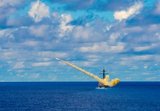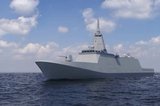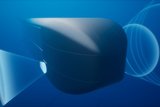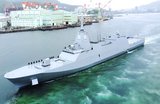Naval Warfare magazine; UK Littoral Strike Groups, Greek naval procurement and more
What’s inside this edition:
Comment: Black Sea battles
While much of the Russian invasion of Ukraine has played out in the air and land domains, the naval aspect remains important. Attempted amphibious assaults, naval supply lines and ancient treaties regarding maritime movement have all been at the forefront of the conflict.
Features include:
Less is more: The benefits of autonomy and lean crewing
Autonomy offers navies the chance to do more with less, lessening the burden on crews to run systems and focus on other tasks. However, the development and deployment of these systems is no easy feat.
Sensing trouble: How CMS are lifting the fog of war
New technologies such as virtualisation, sensor improvements and data fusion are enhancing the effect of CMS on modern fleets, allowing greater range and faster transfer of critical information.
Littoral Response Groups: Rethinking the UK’s amphibious forces
The UK RN has reshaped its amphibious capability through the LRG formations. These will project British Commando Forces that are permanently forwarded deployed; however, current fleet sizes may limit the group’s utility.
Facing the FACs: Fast attack craft progress
While some blue-water navies may overlook the platform, the FAC remains crucial to providing littoral capabilities. What FACs lack in comparison to larger vessels, they compensate for in affordability.
Of two minds: Why has the Iranian navy suffered so many accidents?
With a significant coastline, control over a crucial naval choke point and direct access to the Indian Ocean, Iran should be a leading naval power. However, numerous naval accidents suggest something is awry.
Bonus content coming soon.
More from Naval Warfare
-
![Mitsubishi eyes future with Australia’s Mogami selection]()
Mitsubishi eyes future with Australia’s Mogami selection
With Australia’s selection of the Mogami-class for Project Sea 3000, Mitsubishi is investigating local production in the next decade as potential export opportunities emerge.
-
![Thales’ new Sonar 76Nano could equip UK Royal Navy on anti-submarine warfare missions]()
Thales’ new Sonar 76Nano could equip UK Royal Navy on anti-submarine warfare missions
The new sonar is designed to equip uncrewed underwater vessels, with the potential to be used by the Royal Navy for its Atlantic Bastion and Atlantic Net missions.
-
![Hanwha wins Australian government approval to increase its stake in Austal]()
Hanwha wins Australian government approval to increase its stake in Austal
The contract would mean the two shipbuilders can collaborate strategically and enhance shipbuilding capabilities in Western Australia.






















